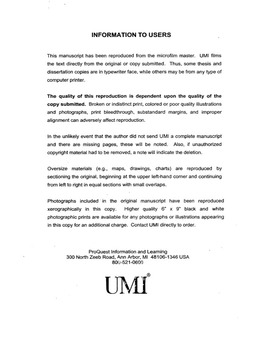| dc.description.abstract | The various hydrologic processes of infiltration, redistribution, drainage, evaporation, and water uptake by plants are strongly interdependent, as they occur sequentially or simultaneously. An important state variable that strongly influences the magnitude to which these rate processes occur is the amount of water present within the root zone, and in particular, the top few centimeters near the soil surface. Traditionally, measurements of soil moisture have been limited to point measurements made in the field. In general, averages of point measurements are used to characterize the soil moisture of an area, but these averages seldom yield information that is adequate to characterize large scale hydrologic processes. Recent advancements in remote sensing now make it possible to obtain areal estimates of surface soil moisture. The use of remotely sensed data to estimate surface soil moisture, combined with soil water and hydrologic modeling, provides a unique opportunity to advance our understanding of hydrologic processes at a much larger scale. Standard techniques for measuring soil moisture have been well documented, with commercial instrumentation being widely available. Various computer models have been developed to estimate soil moisture in the root and vadose zone, although their application over large scales is limited due to varying spatial and temporal field conditions. It is the combination of ground-based data (in-situ measurements), near-surface soil moisture data, and modeling that form the basis for this research. The interactive use of field research, remote sensing ground truth data, and integrated systems modeling is used to describe surface and profile soil moisture conditions at several locations within a large watershed. Successful application of this approach should improve our capabilities for estimating soil hydraulic properties and to better estimate water and chemical transport in the root zone, thus enhancing water use efficiency and plant production. This work demonstrates the applicability of using limited soil data information, in combination with sequential assimilation of surface soil moisture, to adequately model soil water dynamics in the root zone. The results of this research contribute to a better understanding of how the spatial and temporal patterns of surface soil moisture are related to the physical and hydraulic properties of soils. The advantages, limitations, and potential impact of the overall approach are discussed. The Southern Great Plains 1997 (SGP97) Hydrology Experimental data sets, in conjunction with site-specific field data from the Little Washita River Watershed (LWRW) in south central Oklahoma serve as the data base for this project. | en_US |
